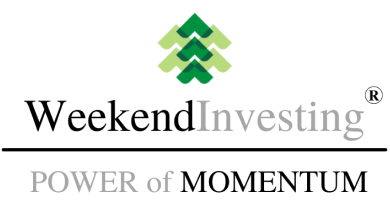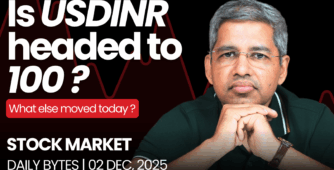Where is the market headed?
Another dull day in the market. Nifty remained largely range-bound, showing little movement throughout the session. Bank Nifty edged slightly lower, while the broader market also stayed flat, with no significant activity across sectors. The market continues to wait for fresh cues, which are yet to appear on the horizon.
Market Overview
Nifty closed 0.15% higher, staying well within the same range as the previous session. However, it continued to hold above the 25,100 mark, which, in itself, is not a bad sign.
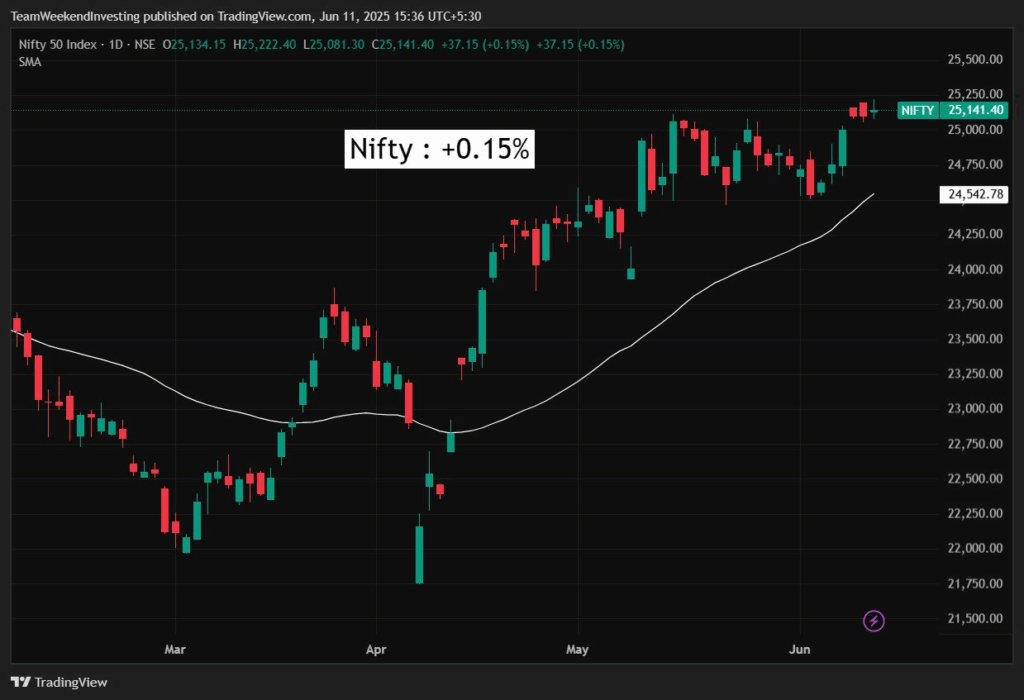
Nifty Next 50
Nifty Junior was down by 0.22%
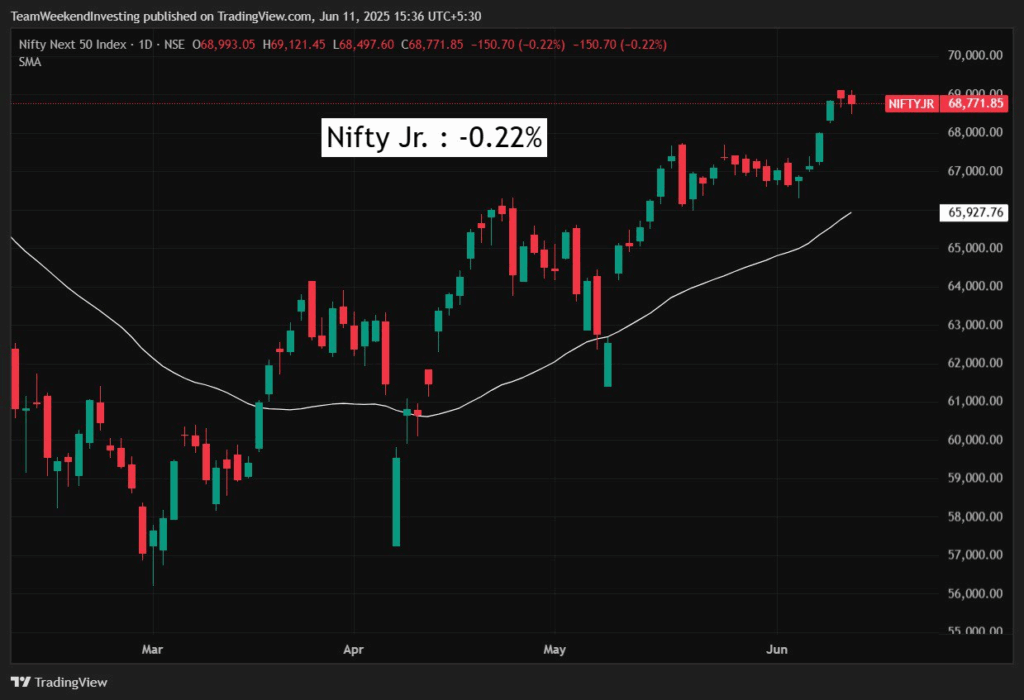
Nifty Mid and Small Cap
Mid-caps witnessed a mild cut of 0.32%, while the small-cap space closed with a marginal decline of 0.09%
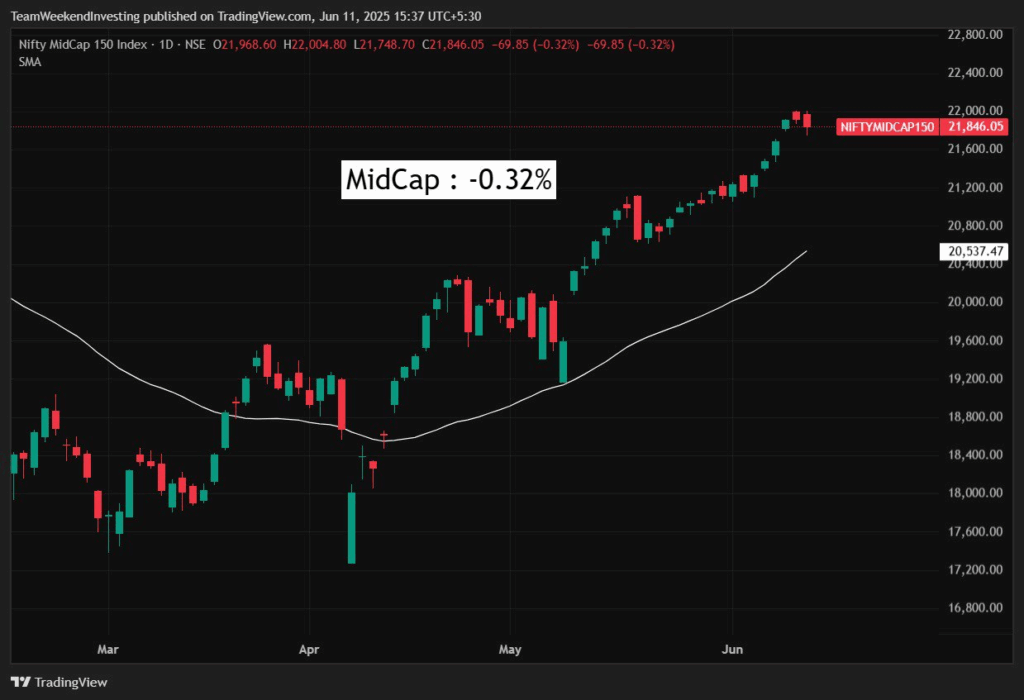
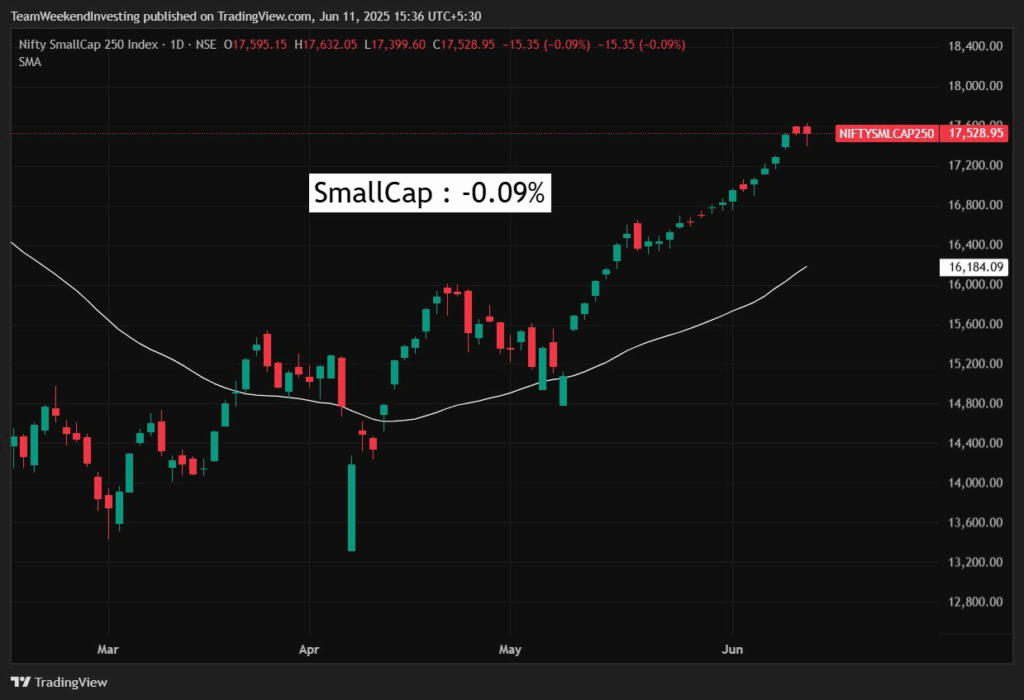
Bank Nifty
Bank Nifty registered a cut of 0.3%
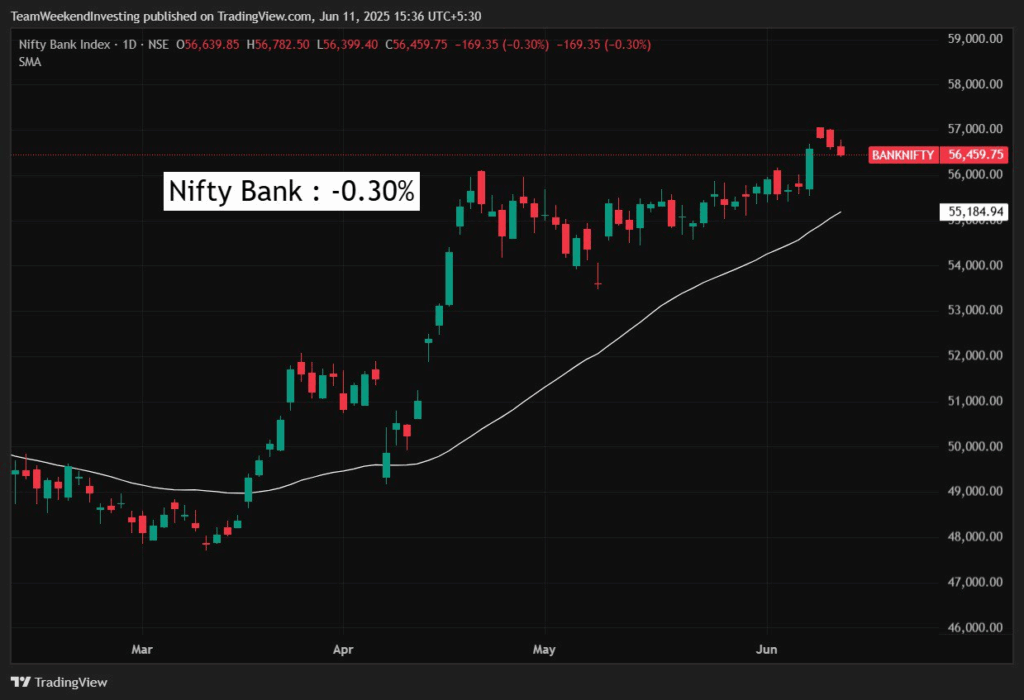
GOLD
Gold prices moved up by 0.26%, reaching nearly ₹9,700 per gram
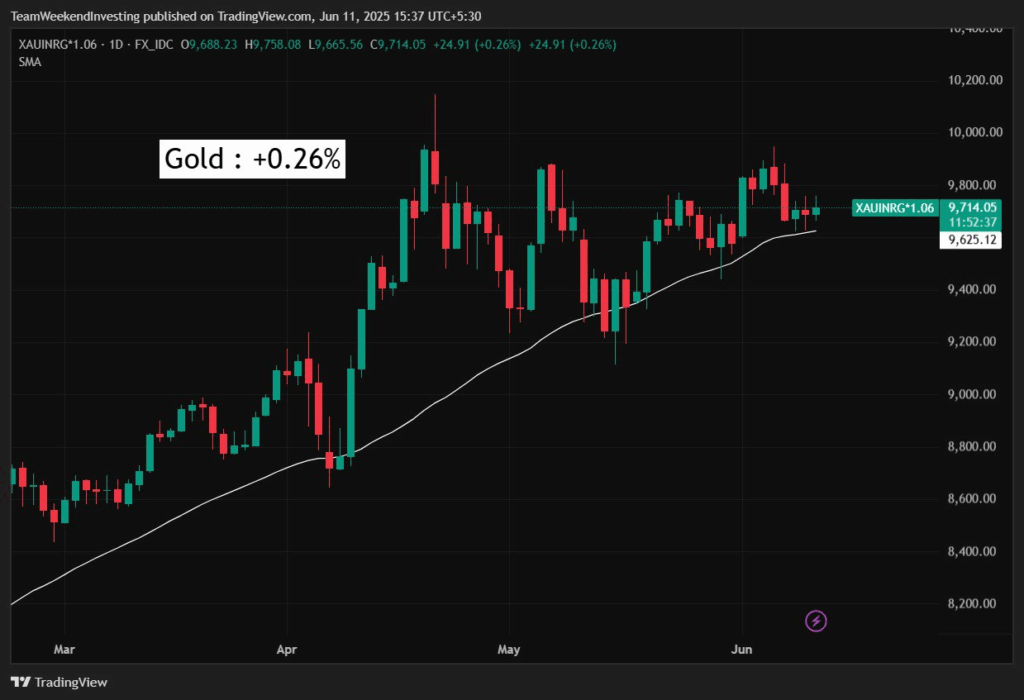
Advance Decline Ratio
The advance-decline trend reflected a slightly concerning pattern. The market opened with strong advances, but these gradually declined throughout the day, hitting a low around 2 PM.
A mild recovery followed; however, the number of advances did not improve further. In contrast, declines increased after the post-noon session, indicating some weakness in market breadth.

Heat Maps
Several prominent stocks witnessed profit booking today, including HDFC Bank, Bajaj Finance, Shriram Finance, Hindustan Unilever, Power Grid, Bharat Electronics, and Maruti. On the other hand, IT stocks were largely in the green, with Reliance, energy stocks like ONGC and Coal India, and Cement stocks also showing strength.
In the Nifty Next 50 space, public sector companies such as IOC, BPCL, GAIL, and LIC performed notably well, indicating a strong day for PSU stocks.
Interest rate-sensitive stocks, including NBFCs, private and PSU banks, gave up some of their earlier gains. In the capital goods segment, ABB and Siemens also saw mild corrections. Losses were also observed in companies like Swiggy, Naukri, Pidilite, and JSPL, while United Spirits declined significantly by 6.59%.
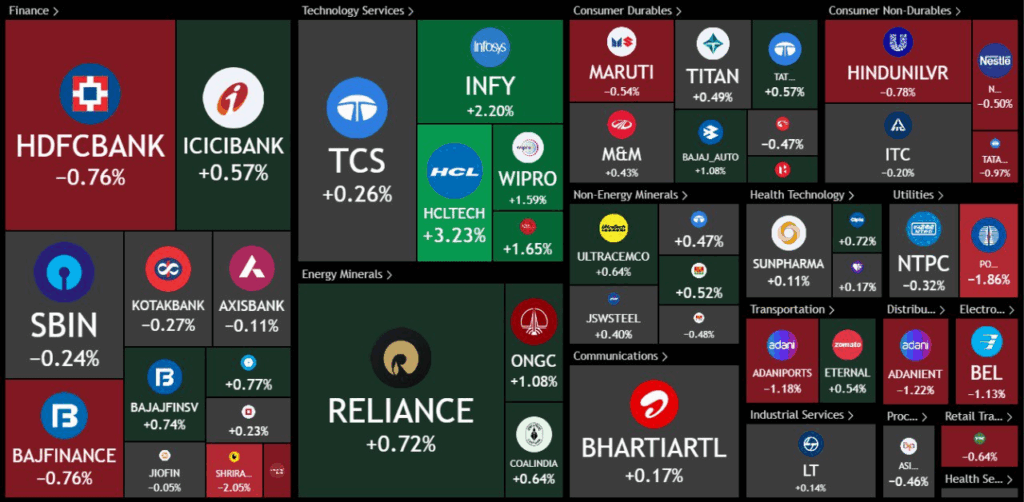
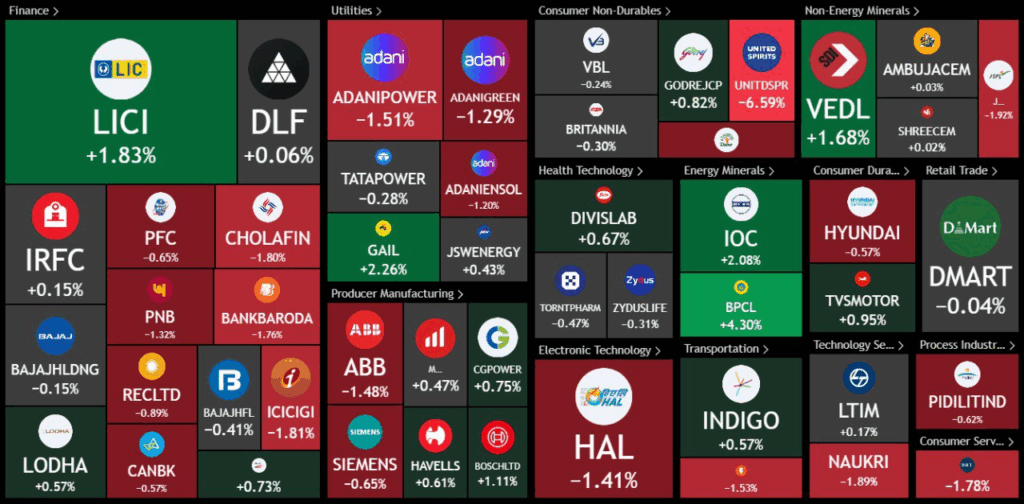
Sectoral Overview
In today’s sectoral trends, Oil and Gas led the market with a gain of 1.5%, followed by IT stocks, which were up 1.3%. This reflects a clear sectoral rotation in play.
Sectors that had been performing strongly, such as defence and capital markets, witnessed a sharp correction. The capital market sector declined by 2.4%, while defence was down 2.1%. PSU banks also ended the session with a 0.9% cut. These segments have been under pressure for the past two to three sessions. Over the past week alone, the defence sector has slipped by 0.6%, indicating a reversal in momentum.

Sector of the Day
Nifty Oil and Gas Index
Oil and gas, as previously highlighted, have witnessed a breakout. The charts now clearly reflect this movement, confirming the breakout.
Oil India, BPCL, HPCL, GAIL, and IOC posted strong performances today, with the sector gaining approximately 1.4%.
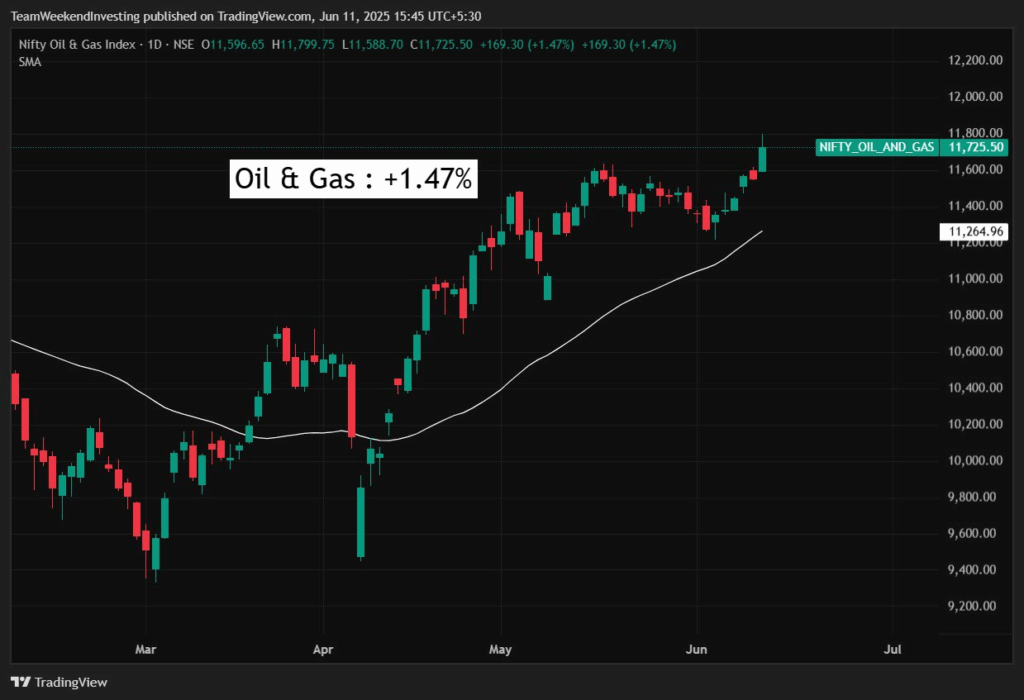

Nifty Capital Market
The capital market space saw notable declines. Indian Energy Exchange dropped 7.5%, while BSE Ltd. fell by 4%. This marks a rare and significant pullback for BSE after a sustained upward trajectory.
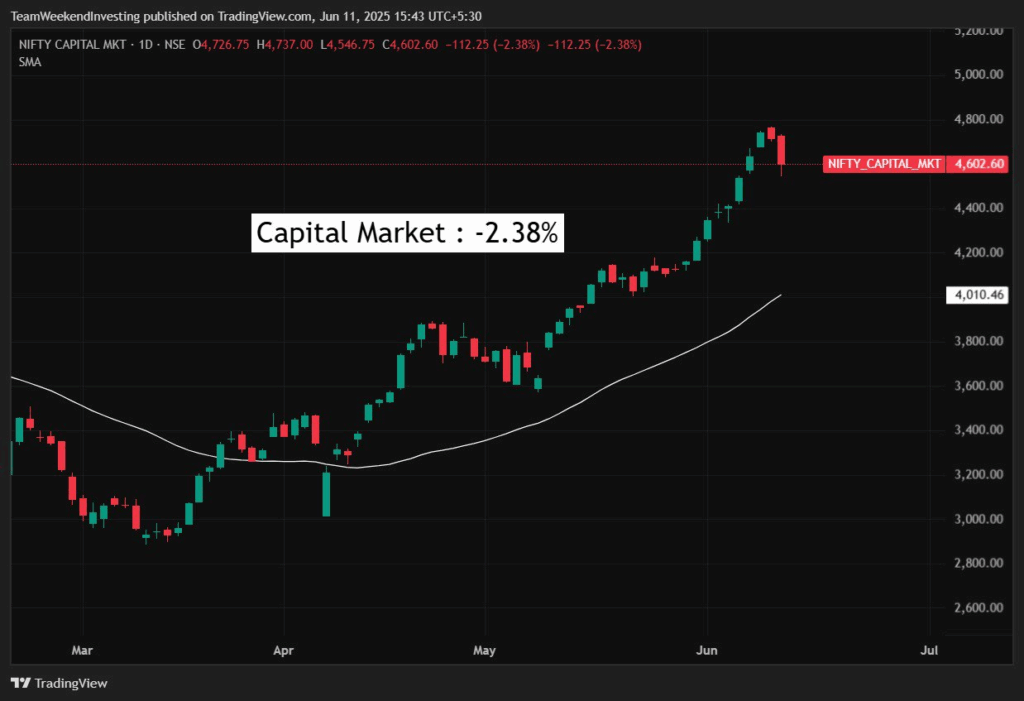

Story of the Day: Gold vs Silver — What Makes the Perfect Hedge?
Today’s focus is on identifying the ideal hedge—whether it is gold, silver, both, or neither. Many investors have been curious about how silver compares to gold from a hedging standpoint, particularly given recent demand trends. Silver is often referred to as the ‘poor man’s gold’ due to its lower cost, prompting a closer look at how both metals have performed during major market crises.
Three significant market downturns have been analysed: the dot-com bust (2000–2003), the global financial crisis (2008), and the COVID-19 crash (2020).
During the dot-com era, the Nifty fell nearly 50% and required considerable time to recover. In this period, silver rose by 12%, while gold delivered a stronger return of 37%.
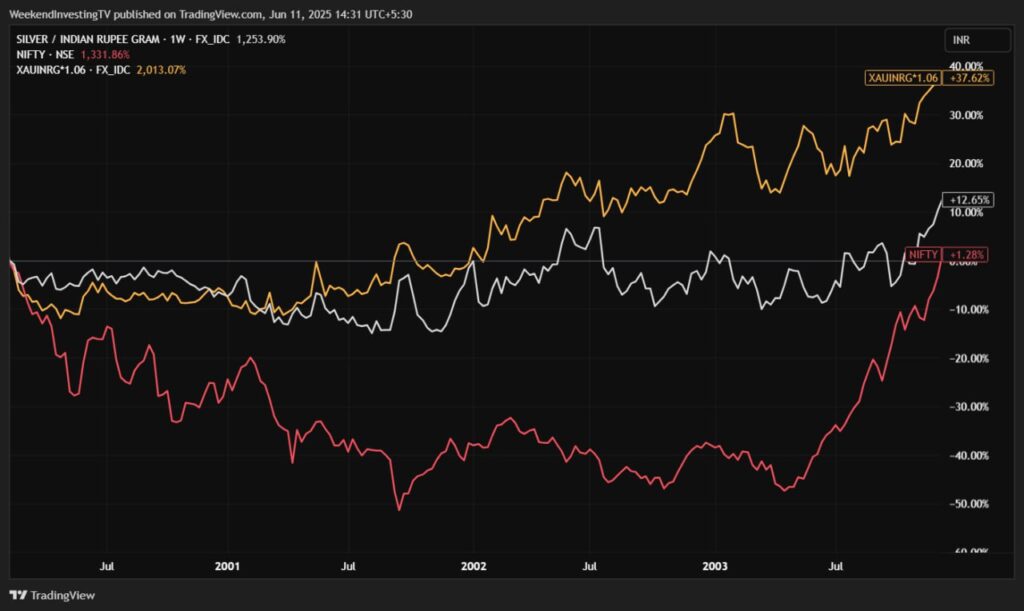
During the 2008 financial crisis, the Nifty declined around 60%. Silver appreciated by 99%, but gold outperformed with a gain of 123%.
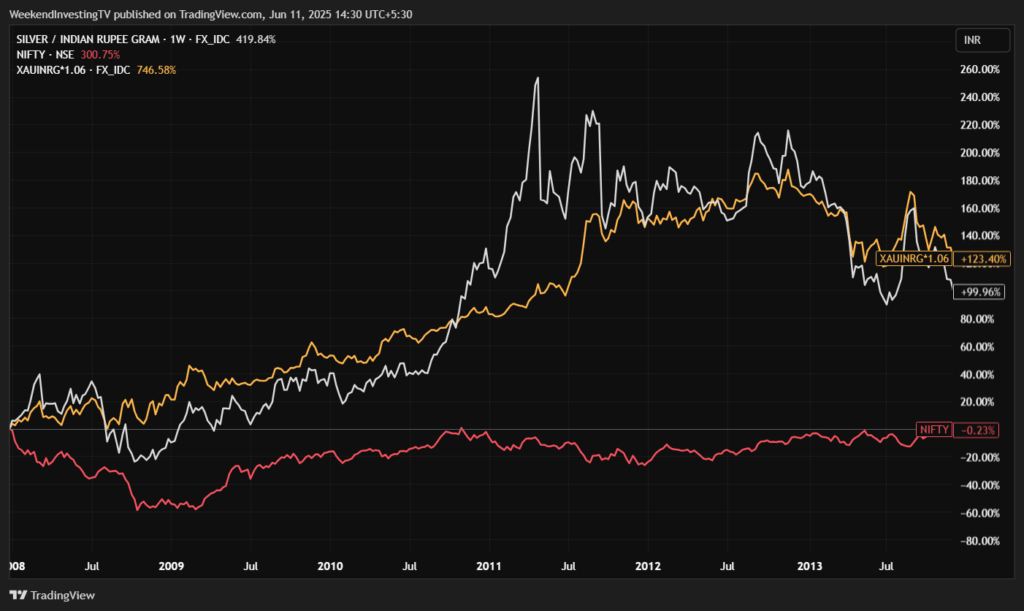
However, silver exhibited extreme volatility—rising as much as 260% before crashing nearly 80%, reflecting its unpredictable nature.
Between 2017 and early 2020, markets remained range-bound until the onset of COVID-19. In this phase, silver delivered a return of -2.1%, while gold rose 54.9%. Silver’s performance was not only weaker but also far more erratic compared to gold’s relatively stable rise.
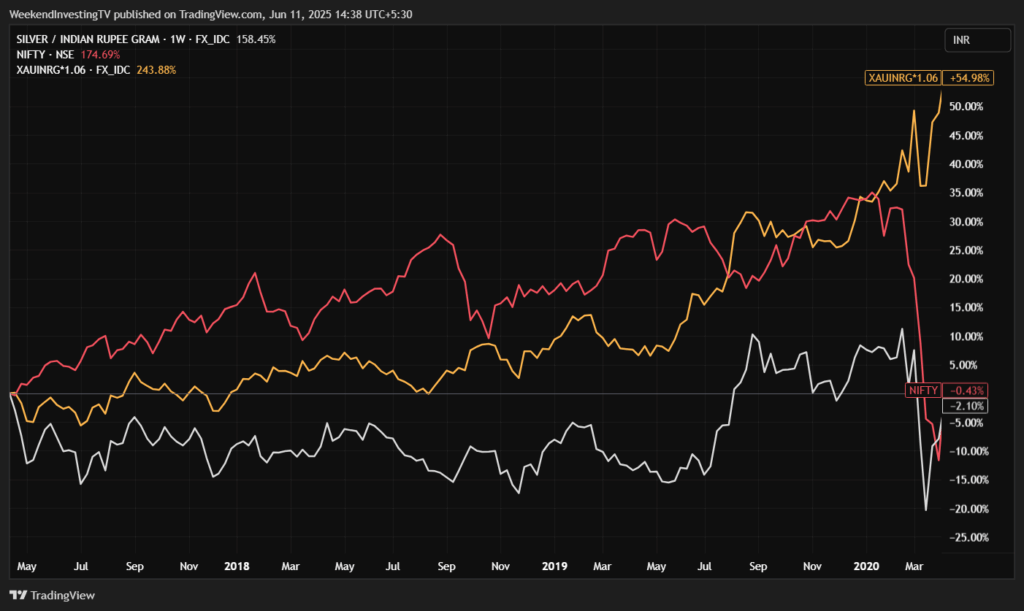
The contrast in behaviour was clearly visible in comparative charts, with silver’s movements marked by inconsistency.
From October 2024 to April 2025, during a 15% market correction, silver showed a choppy trajectory—initially rising, then falling, and ultimately ending with a -3.5% return. In contrast, gold gained 14.6% during the same period, reinforcing its steadier performance.
Over the past 25 years, silver recorded strong gains in years like 2005, 2006, 2009, 2010, and 2020. However, it also underperformed gold in several years—such as 2000–2002, 2007–2008, and 2012–2015.
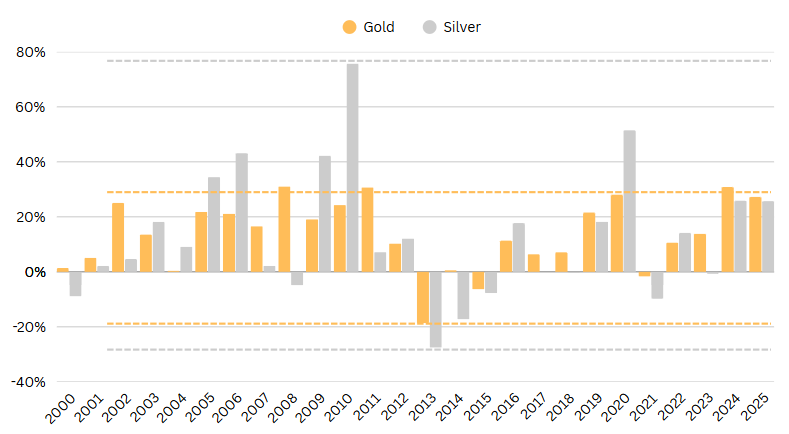
In some cases, an inverse correlation was observed, with gold rising while silver declined. For example, in 2008, gold gained 31% while silver fell by 4.9%. Although silver showed notable returns in isolated years, these spurts have been inconsistent and difficult to capture without precise timing.
Silver’s drawdowns have been significantly deeper. The maximum drawdown in gold over the past 25 years was around 25%, compared to silver’s nearly 57%.
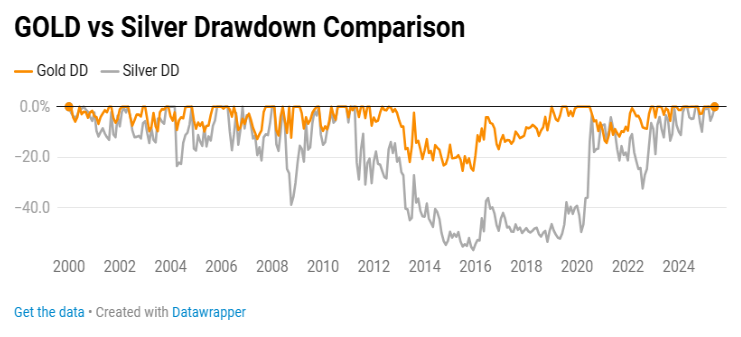
On a five-year rolling CAGR basis, silver slightly outpaced gold (18% vs 16.4%), but over a 10-year horizon, gold led with 14.2% compared to silver’s 12.16%.
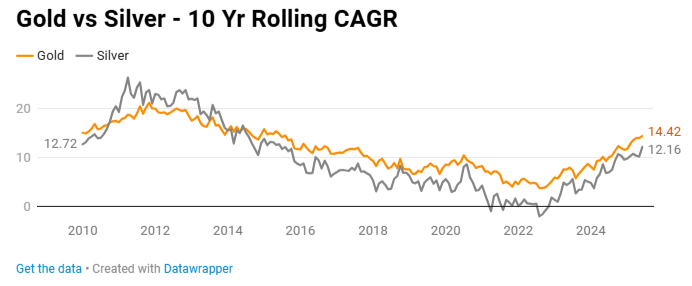
Despite comparable long-term returns, silver’s higher volatility and steeper losses make it less attractive on a risk-adjusted basis.
In the U.S. context, gold appreciated by 9,400% since 1960, while silver rose by 3,800% in the same period. Although silver occasionally narrows the gap during short bursts of outperformance, these are rare and challenging to time effectively.
In summary, while both gold and silver tend to act as safe havens during market declines, gold has historically offered a more reliable and stable hedge. Its consistent track record, lower volatility, and continued accumulation by central banks reinforce its position as a core asset in evolving global financial systems.
What is viewed as the better hedge—gold, silver, or a combination of both—depends on individual strategy and market outlook. However, historical performance and stability place gold in a favourable position.
